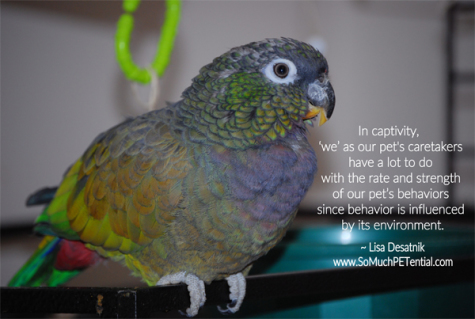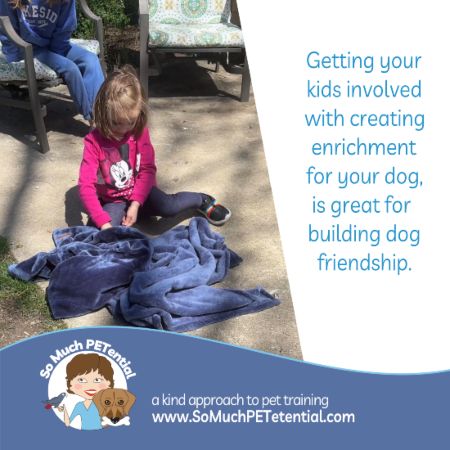On Facebook last week, someone in my network asked me some questions about parrots. They were questions I have heard before. I thought I’d write a post so that others too can learn from my answers.
Questions:
Watching a repeat NaturePBS about the difficulties of raising and keeping Parrots. They seem to exhibit bad behaviors due to sexual maturity and seeing their people as mates. Would it be better to adopt 2 parrots together? Or can you get a parrot to see the relationship as parent/child and would that cut the risk of them exhibiting bad behaviors (biting, screeching, and self mutilation)?
My answer:
Hi Deneen,
Drat, I wish I had seen that. I love that you want to learn and have taken initiative to ask the questions. I will see if I can give you some clarity (and hopefully be of help to others who may be having the very same questions).
Let’s look first to the question, what is behavior? In its most simplest description, behavior is a tool that animals – including parrots – use to get a desired consequence from the environment. How do you know if a behavior ‘worked’ to serve that purpose? Well, if the behavior continues or even strengthens, then we know the behavior got the animal something it valued. If the behavior did not get the animal something of value, the behavior would weaken. Consequences of behavior – including biting and screaming – determine the future rate of  that behavior.
that behavior.
What does this have to do with the ‘bad behaviors’ (biting, screeching and self-mutilation) associated with sexual maturity?
In captivity, ‘we’ as our pet’s caretakers have a lot to do with the rate and strength of our pet’s behaviors since behavior is influenced by its environment.
In Concepts in Behavior (by S.G. Friedman, Ph.D.; Thomas Edling, D.V.M, M.S.p.V.M.; and Carl Cheney, Ph.D.), authors point out that “knowledge of the behavior patterns of free-range parrots, as well as environmental conditions that elicit and shape them, greatly increases our ability to predict, interpret and manage many parrot behaviors in captivity. “
They add that perhaps the most important things caregivers can learn from their pet birds are the behaviors that serve a communication function. Parrots subtle body language involves nearly every feather on their bodies to communicate their comfort or discomfort, or desires. Problems arise when humans misunderstand or miss seeing that body language their pet uses to indicate boundaries of personal space. “Most species of parrots use threatening stances rather than outright aggression to drive off perceived intruders in the wild, and many of these behaviors are seen in captivity as well,” the authors wrote.
What are some examples of that body language? The authors list – Warnings may include raised nape feathers with wings slightly lifted, a raised foot held open at chest level, directed hacking motions with an open beak, and growling. (referencing Lantermann W: The New Parrot Handbook. New York, Barron’s, 1986, pp 91-94. 19. Lattal KA: Continge)
As an example, Dreyfuss, my pionus, will use the displacement behaviors of stretching her wings and legs if I put my arm out at a time when she does not want it there. If I did not move my arm away, she would escalate that behavior to lunging at it. And if I still did not move my arm away, a bite is sure to ensue.
And, if she ultimately needed to bite me to get distance from my arm, guess what behavior she would do more of in the future? She is much more likely to go straight for the bite because her past history would have taught her that stretching her wings and legs did her absolutely no good to remove my arm from her space. You can actually read something I had written awhile back on my solving an issue with her biting my approaching arm in this post.
If she then began biting my arm every time it was in her cage, someone else could say that was due to her being hormonal or any number of other reasons; however, I would know that the real underlying reason for her behavior was because quite simply…biting works for her when other body language does not. By the way, Dreyfuss is a bird for whom I will always need to closely monitor her body language but because I do that and also teach her positive associations with me, it has been a very long time since I have been bitten. When it occurred, I always go back to see what ‘I’ did wrong.
As for screaming, which is a natural form of vocalization for birds, if it is occurring in excess while in captivity, we need to remind ourselves again that behaviors that are repeated are serving a function for that animal. Ongoing behaviors that are even strengthening are being reinforced by something in the environment (meaning there is some valuable consequence to the animal from doing that behavior).
Rather than delving extensively into that here, I’ll refer to one of my very first writings about how I solved a screaming issue with Barnaby, my Timneh African Grey. Actually, it was learning how to successfully modify his behavior (with lots of help and encouragement from Dr. Friedman, for whom I so grateful) that sent me down this whole journey of wanting to learn more about behavior science.
With many behavior problems, changing the environment rather than changing the bird is a great way to set your pet up for success. Chester, my Alexandrine Ringneck who lived with me for 18 plus years, was an incessant chewer. He had destroyed a piece of furniture once before. How I solved that problem was by giving him many different opportunities to have his needs met in appropriate ways with rolled up phone books in his cage, wood blocks, and more plus play stations on the floor.
Now let’s circle back to your questions: Would it be better to adopt 2 parrots together? Or can you get a parrot to see the relationship as parent/child and would that cut the risk of them exhibiting bad behaviors (biting, screeching, and self mutilation)?
I think the answer really is to understand that all pet bird behaviors are occurring to serve that animal a function. When we understand that, the question is not really about whether we should have a parent/child relationship but rather how can we as our pet bird’s caretaker arrange our bird’s environment to set him/her AND me up for success?






